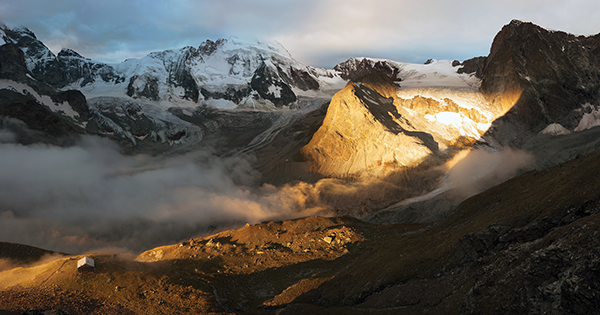
With his landscapes of the Alps, Canadian photographer Scott Conarroe hopes to soothe the sting of climate change. Conarroe won a Guggenheim Fellowship in 2013 to photograph the melting glaciers that form the shifting borders between France, Switzerland, Austria, and Italy. “The landscapes appear pristine and primeval, but they’re expressions of industrial aftermath,” he says. His large-format prints will be exhibited this spring in Lugano, Switzerland, alongside the work of 19th-century Italian mountaineer and photographer Vittorio Sella. Here, Conarroe tells the Scholar how he captured a moment in the mountains outside Zermatt, Switzerland.
“In British Columbia, where I’m from, to get up in the mountains is a major trek. Here in Switzerland, you can be on a train in the morning and standing on a glacier by lunchtime. When I was young, I was into snowboarding, so I was always outdoors. I ran away to the mountains at age 17, and I lived in mountain towns in my 20s. It feels like I’m picking up where I left off 15 years ago.
For this view of the Schönbielhut, I had hiked up and camped out the night before. I was packing up and on my way home, and it all just happened. I dropped everything and just let it happen. I find myself retracing my steps this year. For the next excursion, I’m going out to the Hintereisferner on the Austria-Italy border.
This series is about glaciers and is based around the idea of the movable border. France, Austria, Italy, and Switzerland have agreed to have fluid sections. Sometimes it’s just a few meters or a few hundred meters. But one meter in either direction is a world of difference.
I’m trying to create something you’d like to spend time with, rather than look at and see a horror—something you can enjoy, rather than grasp that something is about to change in a really big way. These are big spaces. It’s more than you can fit in a photograph. You can lean in and pick out the details, too.

